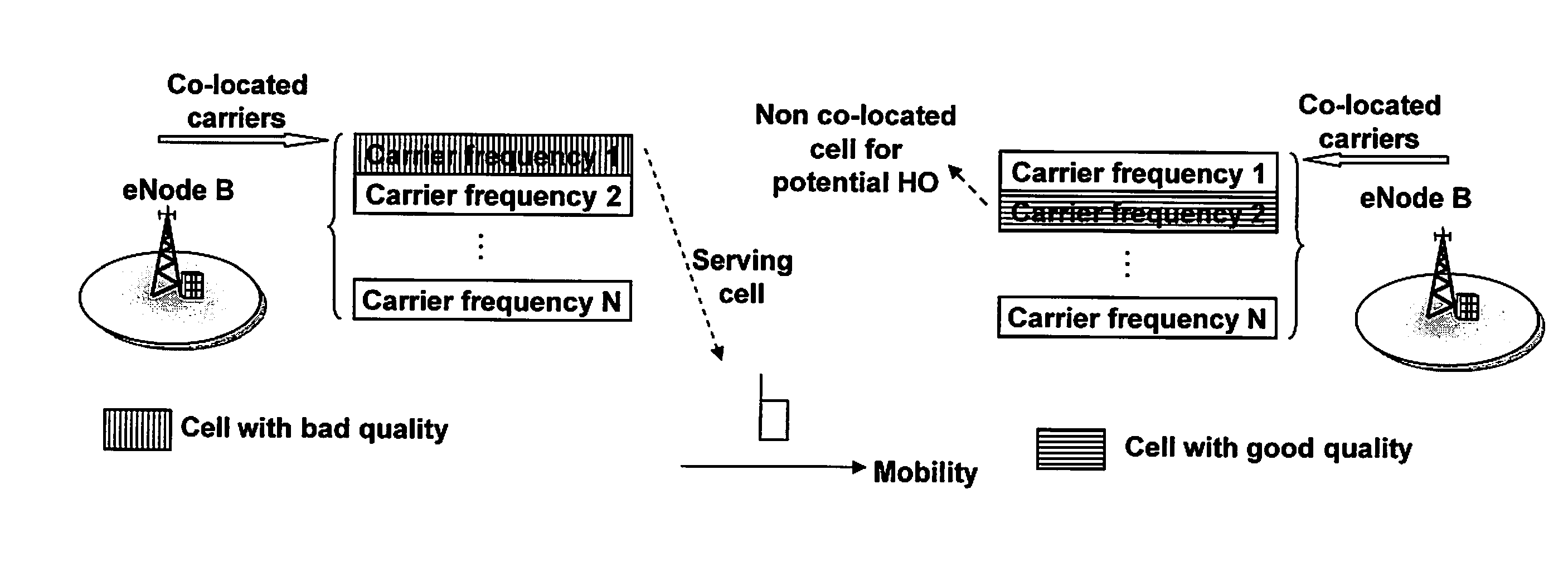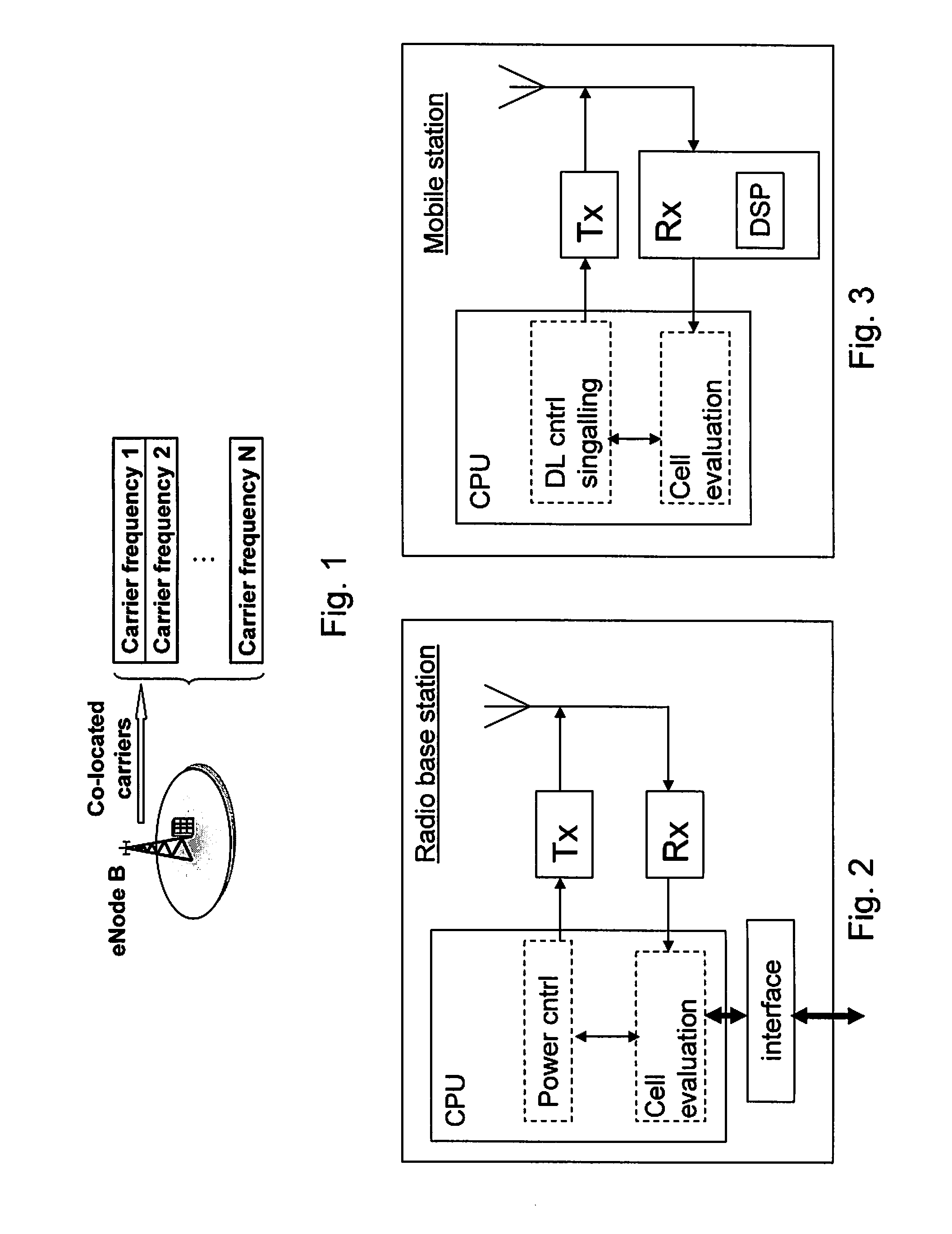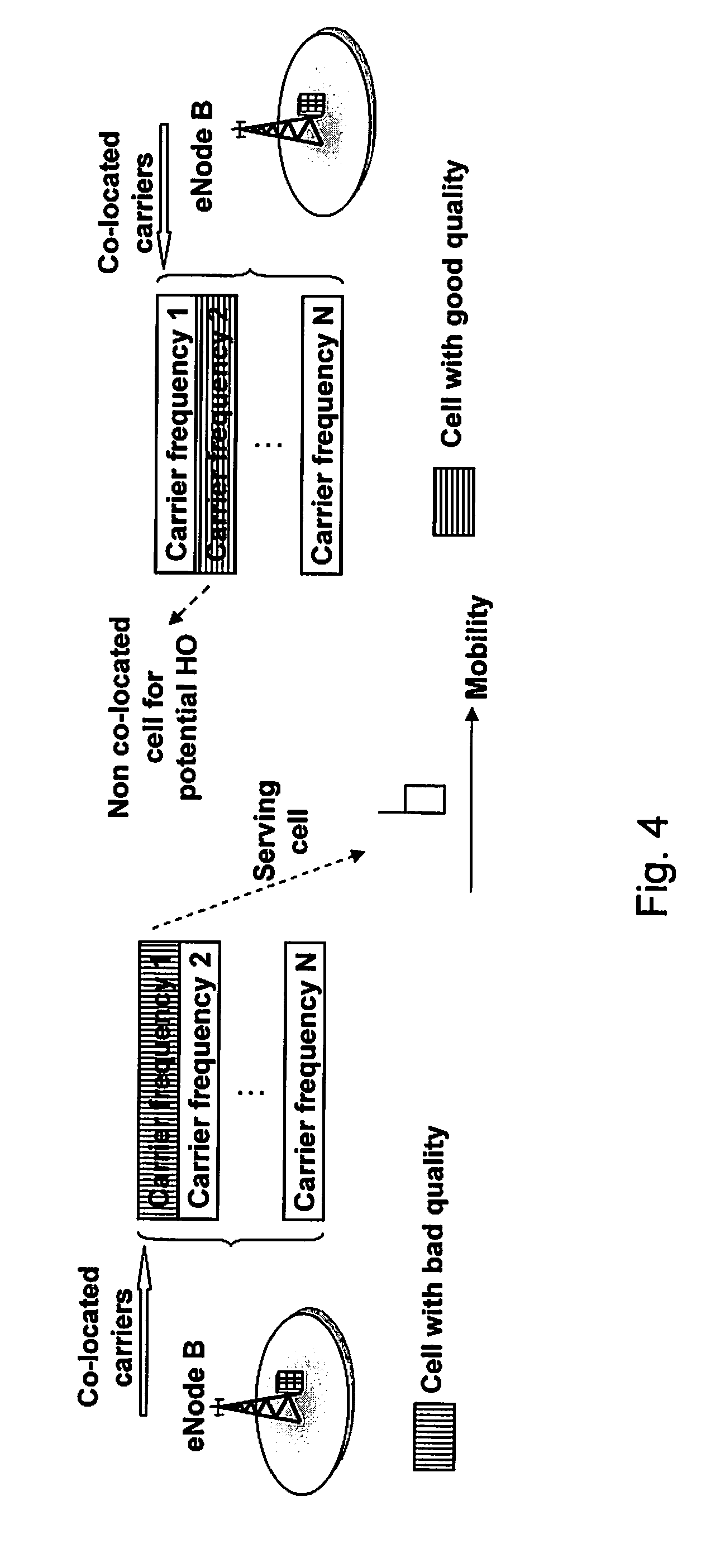Quality based handover procedure between co-located cells
a co-located cell and quality-based technology, applied in the field of cellular communication systems, can solve the problems of discrepancy in the actual quality of the cell for a given user, requiring significantly complex computation, and increasing the complexity with the number of cells to be measured
- Summary
- Abstract
- Description
- Claims
- Application Information
AI Technical Summary
Benefits of technology
Problems solved by technology
Method used
Image
Examples
first embodiment
[0090]In the first embodiment the serving base station first performs inter-frequency handover to a co-located cell on non serving carrier Fj (or on RATi) provided its quality is acceptable and secondly if coverage on Fj (or on RATi) becomes worse then perform intra-frequency handover i.e. on the same Fj or RATi.
second embodiment
[0091]In second embodiment the serving base station first performs intra-frequency handover to a cell (on the serving carrier) located in site k and if quality does not improve then inter-frequency (or IRAT) handover to a co-located cell is performed at base station site k.
[0092]In another embodiment the serving base station does performs inter-frequency (or inter-RAT) handover to a non co-located cell at base station site k but the new base station (k) immediately checks if new cell quality is acceptable e.g. by requesting reporting of absolute events or measurement reports.
Quality Based Handover Across Non Co-Located Sites
[0093]FIG. 4 shows the scenario comprising of multiple co-located cells available on each base station site. It illustrates handovers between non co-located cells. Though not shown in the FIG. 4 but each site may also have more than one access technologies e.g. N E-UTRAN and M UTRAN carriers per site and so on.
[0094]In this type of setup several types of handover...
PUM
 Login to View More
Login to View More Abstract
Description
Claims
Application Information
 Login to View More
Login to View More - R&D
- Intellectual Property
- Life Sciences
- Materials
- Tech Scout
- Unparalleled Data Quality
- Higher Quality Content
- 60% Fewer Hallucinations
Browse by: Latest US Patents, China's latest patents, Technical Efficacy Thesaurus, Application Domain, Technology Topic, Popular Technical Reports.
© 2025 PatSnap. All rights reserved.Legal|Privacy policy|Modern Slavery Act Transparency Statement|Sitemap|About US| Contact US: help@patsnap.com



